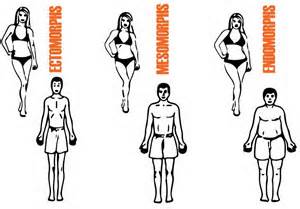TJ Morris dba ACIR
ACO-ACE-ACIR
ERA
COP -Educational Research Associates Community Online Press
ERA
COP MISSION:
Our
mission to enrich experiences as part of the total whole life
experience; promote service to the community; to emphasize the
development of leadership, character, and judgment.
A
good coach has to be able to do the following for clients:
1)
RAPPORT
Your
coach must be able to perceive and appreciate the strengths, talents
and unique gifts you bring to your job.
Only
when appreciation and trust exists will you be able to accept
coaching. Otherwise you will naturally respond defensively.
2)
OBSERVATION
An
effective coach is a keen observer. Keen as in HAWK EYED.
The
coach observes every gesture, tone, hesitation, choice of words, body
language, motion, innuendo, tactic, decision.
A
coaching session is not a casual “Let’s get together and talk.”
It
is closer to getting an MRI in which you are being observed from
every angle.
You
should be somewhat startled by how much your coach learns about you
in a very short time.
3)
FEEDBACK
Change
requires mechanisms for accurately perceiving the existing state of
affairs so you know what needs to be changed .
A
strong coach will tell you clearly and precisely what he or she
perceives about your behaviors and their effects on others.
The
coach will choose one or two high-payback behaviors to focus on and
not overwhelm you with a stream of observations undifferentiated in
importance.
4)
CHOICE
A
skillful coach will articulate the consequences of your current
behaviors – the price you are paying for these and the price you
are likely to pay in the future.
He
or she will encourage you to weigh the costs and benefits of your
current behaviors and decide if you want to change these.
The
coach will respect you making a conscious choice to live with the
behaviors or work to change them, but will not allow you to simply
use the old behaviors by reason of habit.
5)
OPTIONS
An
effective coach will help you generate options for different
behaviors that would be more productive.
The
coach will pay attention to which option interests you and encourage
you to
try
that option first as, whether or not it is his or her first choice,
you are more likely to stick with it over the long run.
6)
PRACTICE
A
hands-on coach will have you practice new behaviors or difficult
conversations before you engage in them.
Action
plans, strategies, role plays, all have their place in preparing you
to do your best in each situation.
7)
DEBRIEF
Learning
from doing is significantly enhanced by “After Action Reviews” or
debriefs.
A
results-oriented coach will examine with you what went well, what did
not, and what are the take away lessons for the future.
8)
REINFORCEMENT
A
supportive coach will stay alert for instances in which you are using
the new behaviors well and will validate these.
Perfection
is not a realistic goal, but continuous improvement is. Shining a
spotlight on an instance of improved behavior helps you use it as a
model for future behavior.
9)
PROBLEM SOLVING
As
knowledge of you and your business grows, a trusted coach becomes a
thinking partner.
Effective
coaches are adept at posing the right questions to help you examine
issues from new and often deeper perspectives.
Dialogue
about problems often leads to detection of the unseen pitfalls or
unrecognized potential in situations.
As
useful as these discussion are, rather than letting them become a
substitute for appropriate group collaboration, the coach helps you
forge the culture and processes that utilize the wisdom of teams and
maximize their commitment.
10)
TRANSFORMATION
At
the highest level, once the issues that precipitated the need or
desire for coaching have been addressed, coach-client relations may
evolve into forums for transformation.
Coaching
sessions become a conversation to help you explore your deeper values
and find and express your unique voice on which great leadership is
built.
What
software will you use with your signature pads?
First and foremost, what type of software will you be using? Are you an end-user looking for basic desktop publishing (Microsoft Word, Adobe PDF) and spreadsheets (Microsoft Excel)? Or are you a developer looking to integrate eSignatures within an application? Different manufacturers provide robust SDKs, developer examples, and support in the following languages: |
||||||||||||||||||
|
||||||||||||||||||
•
|
||||||||||||||||||
•
|
||||||||||||||||||
•
|
•
|
Copyright
© 2007-2015 TJ Morris dba ACIR. All rights reserved. Disclaimer:
Information
provided
by TJ Morris Media communication between you and TJ Morris dba
ACIR are not
legal
advice.Information you provide to TJ Morris dba ACIR is protected
by our
Confidentiality
and Privacy Policy but not through attorney-client privilege as
TJ
Morris dba ACIR is not a law firm.
Theresa
J Morris owns TJ Morris dba ACIR with divisions as TJ Morris
Media,
that provides access to self-help services at your instruction and
access to
independent
third party attorneys and patent agents. Theresa J Morris, owner
of
TJ
Morris dba ACIR strives to maintain information that is accurate
and useful as
information
services on the Internet to be integrated into our social affairs.
•
|





Comments
Post a Comment